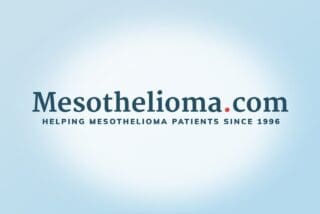February 28th, known as Rare Disease Day, offers us an opportunity to spread awareness about some of the lesser known – but just as important – diseases that often get overshadowed by more common illnesses. Although each individual disease might only affect a relatively small number of people, together rare diseases account for a rather large amount of the pain, suffering, and loss that many individuals experience on a daily basis.
As mesothelioma is considered a rare disease, with approximately 3,000 new diagnoses in the United States each year, we are proud to support this effort to get the word out about those diseases that tend to garner less attention than their more common counterparts.
What Is a Rare Disease?
The definition of a rare disease is different depending on where you live.
- United States: In the U.S., a rare disease is one that affects fewer than 200,000 Americans at any given point in time.
- Europe: In the European Union, a disease is considered rare if it affects fewer than 1 in 2,000 people.
Although these definitions of rare diseases are different, they convey the same message: just because a disease only affects a small number of people, that doesn’t mean we should ignore it.
Rare diseases can originate in a number of different ways, from genetic defects or predispositions, to bacterial or viral infections, or even exposure to dangerous materials. Whatever the reason for the disease, the thing uniting them all is that few people know about them, which makes finding effective treatments and cures a distinct difficulty.
Common Problems of Rare Diseases
There are thousands of diseases considered rare – more than 6,000, according to one count, though an exact number is hard to obtain, due to the difficulty of properly detecting and diagnosing many of them.
One big problem that most, if not all, rare diseases face is related to research. By definition, rare diseases affect a small number of people, making it hard to find subjects who can participate in studies that could lead to a better treatment. Many rare diseases are also very aggressive, meaning that even when patients are found, they may be too far along to participate in a clinical trial.
As a result, the amount of research being done on rare diseases is very small, and therefore the amount of information we have about these diseases is likewise limited. Increasing the amount of funding for research of rare diseases could help to some degree, but such allotments are often made in a utilitarian fashion, with the most money (and interest) going toward the research of diseases that affect large numbers of people.
This is also true when it comes to pharmaceutical companies deciding where to spend their research and development dollars. Given the high costs of creating a new drug and getting it approved by the U.S. Food & Drug Administration (FDA), many drug companies pursue those drugs that will help them increase profits for their shareholders – which usually means spending time on drugs that help large numbers of people. While the FDA’s orphan drug program provides some incentive for the pharma industry to pursue drugs for rare cancers and other diseases, there is still a long way to go in streamlining the process to make it easier to bring new treatments for rare diseases to market.
Our Partners for Rare Disease Day
During February, the Mesothelioma Cancer Alliance has had the honor to work with several great organizations at the forefront of the effort to bring awareness about rare diseases to the public. These organizations represent a variety of different rare diseases, including various cancers and autoimmune diseases.
Each one of our partners in Rare Disease Day works tirelessly to spread awareness and ensure that those battling these diseases can have hope. Thank you for all that you do!





